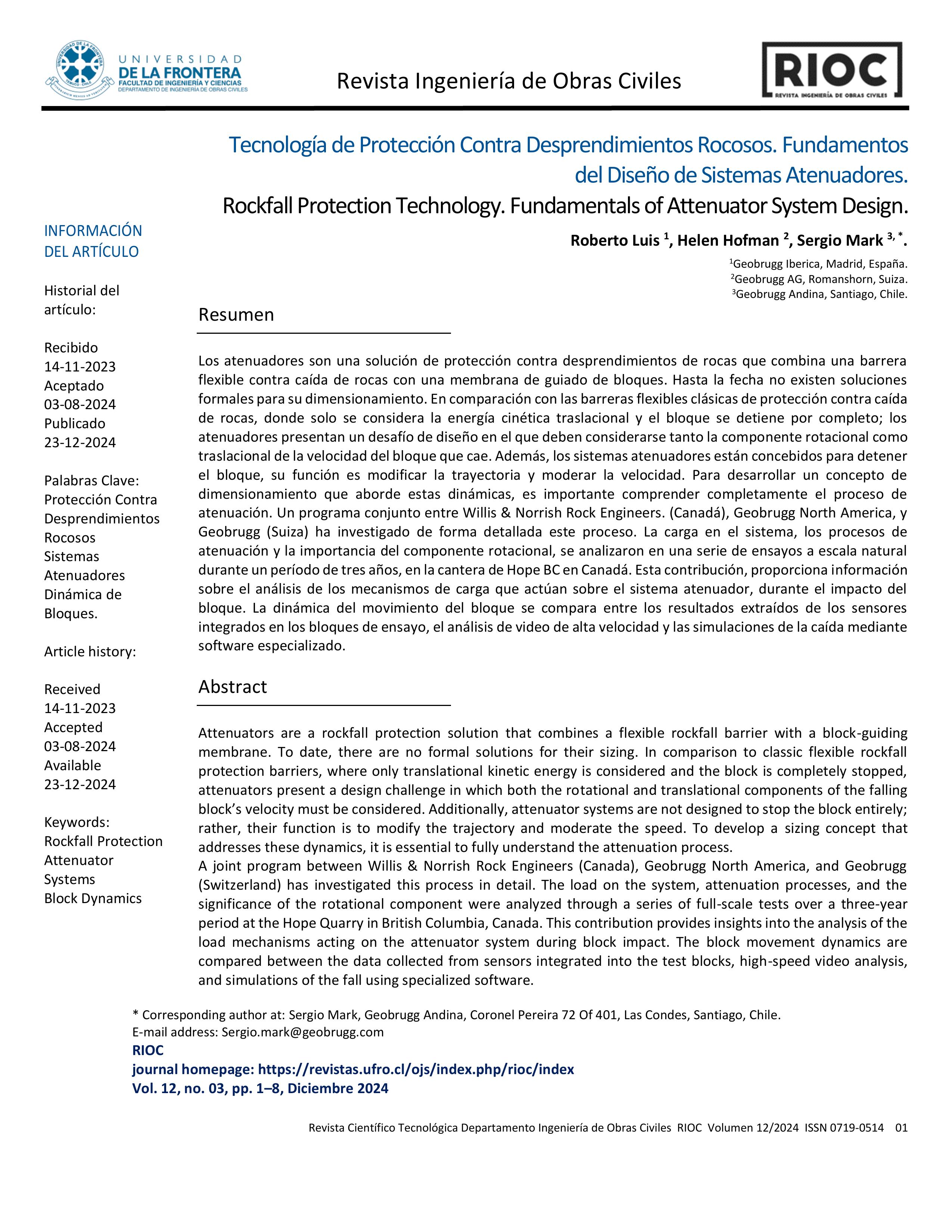Rockfall Protection Technology. Fundamentals of Attenuator System Design
Keywords:
Rockfall Protection, Attenuator Systems, Block DynamicsAbstract
Attenuators are a rockfall protection solution that combines a flexible rockfall barrier with a block-guiding membrane. To date, there are no formal solutions for their sizing. In comparison to classic flexible rockfall protection barriers, where only translational kinetic energy is considered and the block is completely stopped, attenuators present a design challenge in which both the rotational and translational components of the falling block’s velocity must be considered. Additionally, attenuator systems are not designed to stop the block entirely; rather, their function is to modify the trajectory and moderate the speed. To develop a sizing concept that addresses these dynamics, it is essential to fully understand the attenuation process.
A joint program between Willis & Norrish Rock Engineers (Canada), Geobrugg North America, and Geobrugg (Switzerland) has investigated this process in detail. The load on the system, attenuation processes, and the significance of the rotational component were analyzed through a series of full-scale tests over a three-year period at the Hope Quarry in British Columbia, Canada. This contribution provides insights into the analysis of the load mechanisms acting on the attenuator system during block impact. The block movement dynamics are compared between the data collected from sensors integrated into the test blocks, high-speed video analysis, and simulations of the fall using specialized software.
Downloads

Downloads
Published
How to Cite
Issue
Section
License
Copyright (c) 2024 Roberto Luis , Helen Hofman , Sergio Mark

This work is licensed under a Creative Commons Attribution 4.0 International License.
The authors who publish in this journal accept the following conditions:
- The authors retain the copyright and assign to the magazine the right of the first publication, with the work registered with the Creative Commons attribution license, which allows third parties to use the published information whenever they mention the authorship of the work and the First publication in this journal.
- Authors may make other independent and additional contractual arrangements for non-exclusive distribution of the version of the article published in this journal (eg, include it in an institutional repository or publish it in a book) as long as it clearly indicates that the work Was first published in this magazine.
- Authors are encouraged and encouraged to publish their work on the Internet (for example, on institutional or personal pages) before and during the review and publication process, as it can lead to productive exchanges and a greater and faster dissemination of work Published (see The Effect of Open Access).







